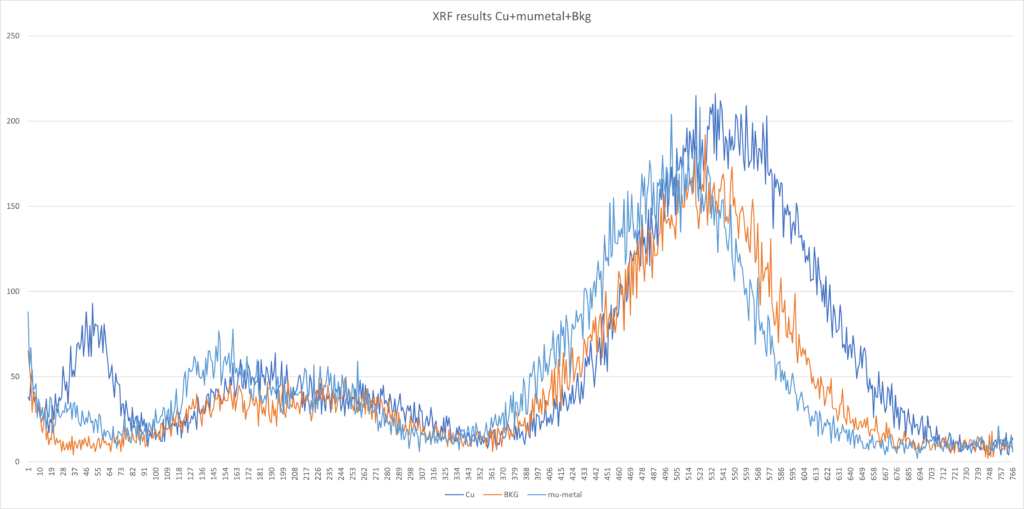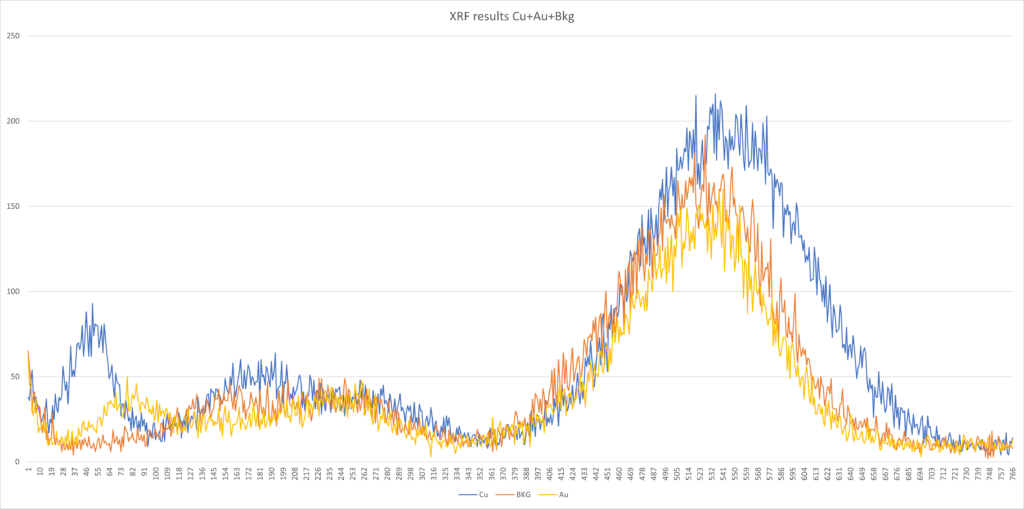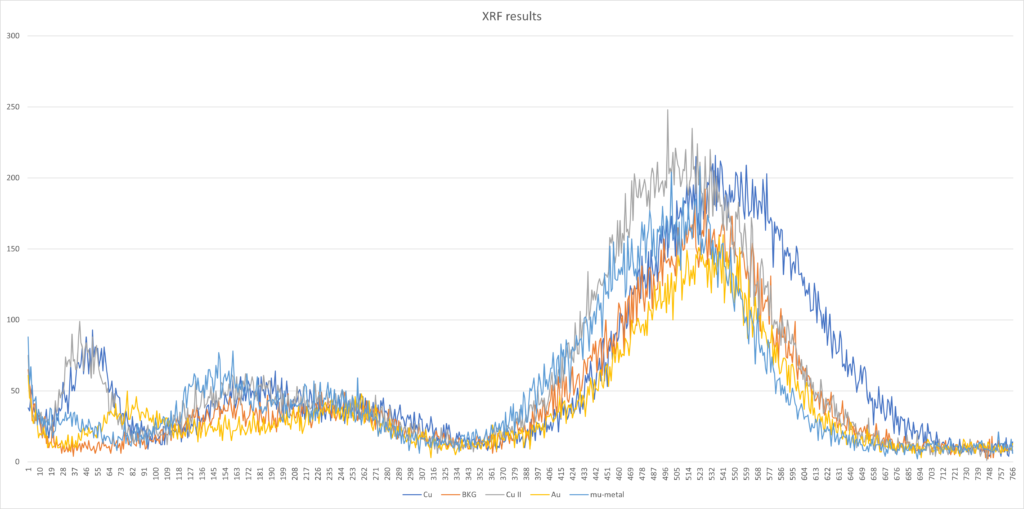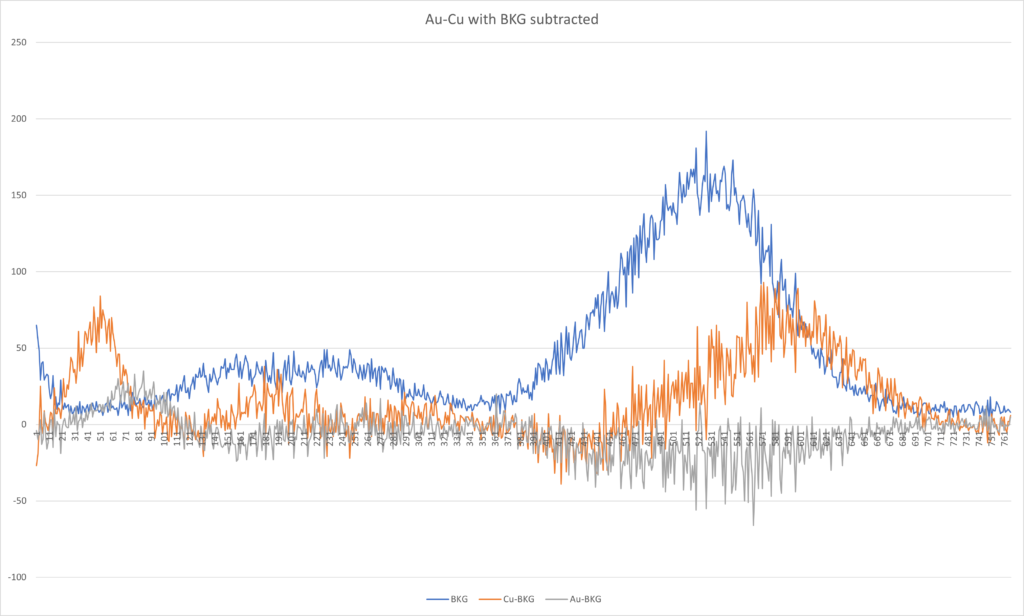BACK TO BUSINESS
After two days of working on my XRF (X-ray fluorescence) system, I’ve finally understood the following:
- My preamp was inadequate. I achieved a 14% FWHM (Full Width at Half Maximum) at the Cs-137 line with a 7% crystal.
- The Ba (Barium) shielding is ineffective. I’ve discarded it.
- I need to adjust the geometry between the Am-241 source and the detector.
- I require a proper X-ray collimator that shields the CsI(Tl) (Cesium Iodide doped with Thallium) detector from direct Am-241 gamma rays, allowing only X-ray fluorescence to enter. I’ve ordered some pure Bismuth metal to sand cast an appropriate one.
While waiting for the Bismuth, I’ve tested the arrangement of the Am-241 sources and found that they should be placed parallel to each other to minimize unwanted interactions. I’ve also discovered that the stronger the Am-241 source, the better the results. Currently, I’m conducting experiments with 3 sources, but I plan to increase this number to 6-8, totaling 6.4 microcuries (uCi).
SOME NOTES ABOUT MY SPECTROSCOPY SYSTEM
I’m using a NIM system made out of:
- Ortec 571 pulse amplifier and shaper with 3uSec tau for CsI(Tl) and 100x coarse amp. 0.8x fine amp.
- ND582 ACD with 1024 channels
- ND556AIM Ethernet bridge to ADC
- EPICS software with mca module installed as per NPL guide: http://www.nuclearphysicslab.com/npl/npl-home/spectroscopy/software_and_hardware/diy-canberra-system/
- AmericiuMCA software by me: https://github.com/l-papadopol/AmericiuMCA
CRYSTAL FWHM
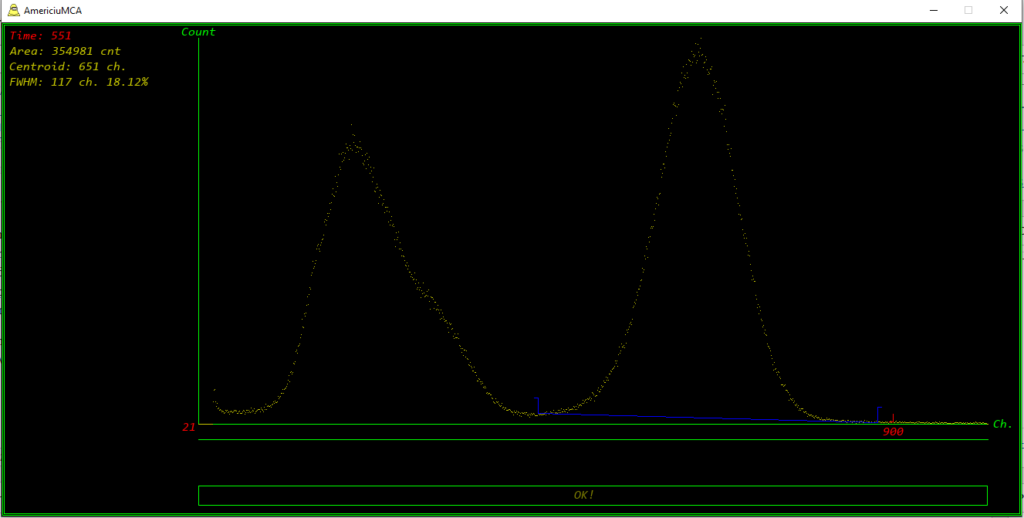
I’ve tested the FWHM (Full Width at Half Maximum) of my crystal at 59 keV from Am-241: it’s 18.1%. This is almost the best performance I can achieve with CsI(Tl) (Cesium Iodide doped with Thallium) material. I suspect that NaI(Tl) (Sodium Iodide doped with Thallium) could provide an improvement of two to three FWHM points, but I don’t have the capability to cut and prepare such material in my lab.
PREAMPLIFIER
As I mentioned earlier, my old equipment was inadequate. However, this new one I’ve developed works exceptionally well. It’s also very durable and reliable!
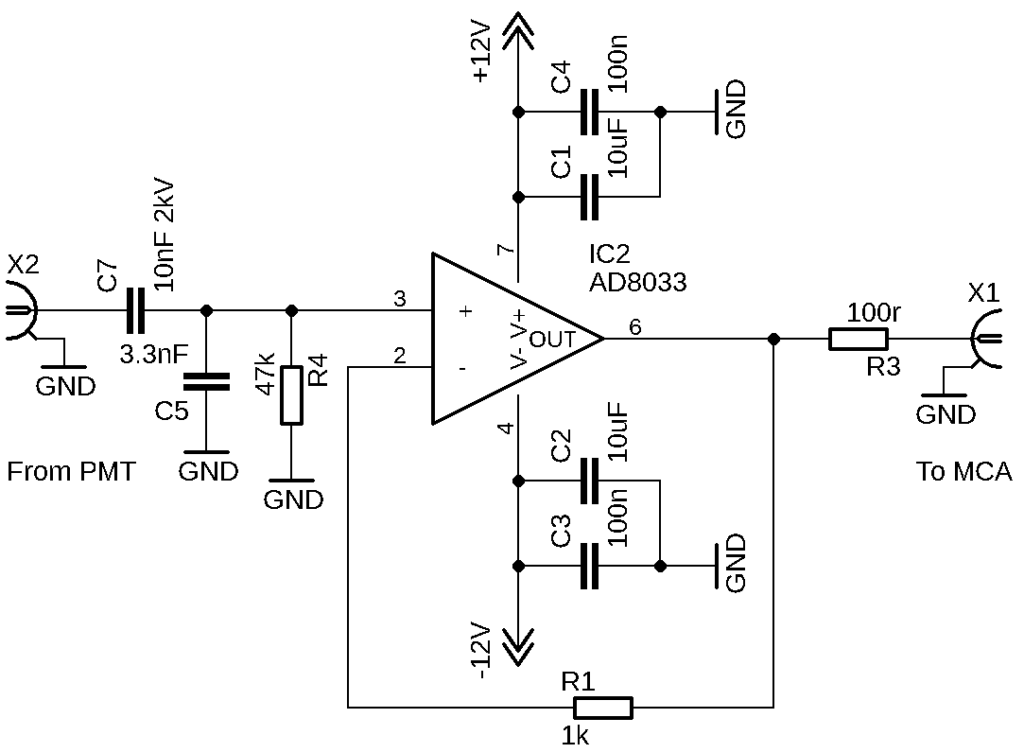
ASSEMBLY
A picture says more than a thousand words.
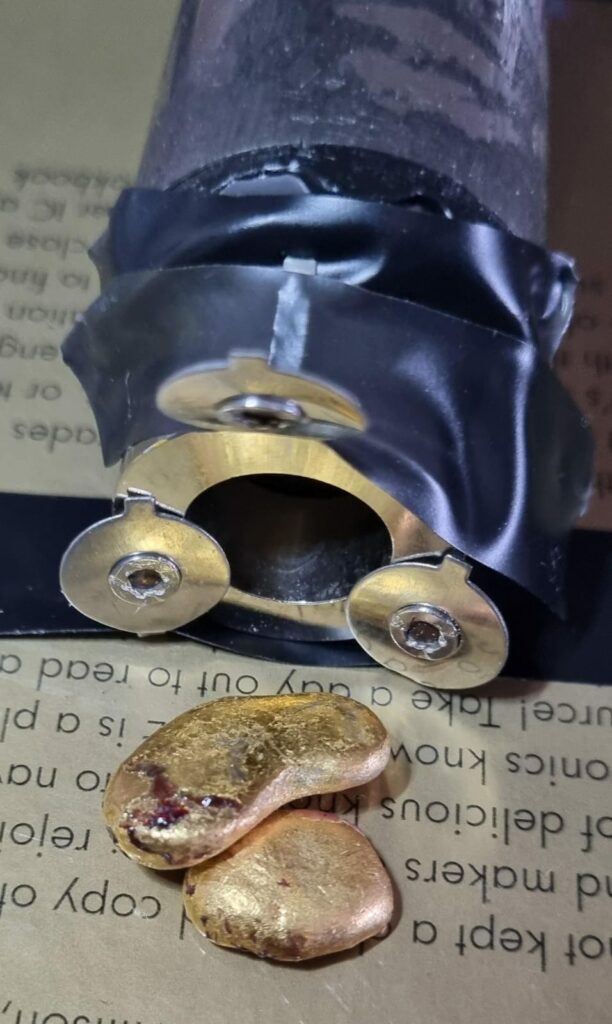
RESULTS
It seems that I can distinguish between copper and gold… not bad! I should try to further improve my system!
